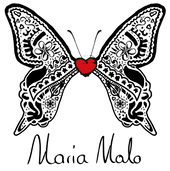There is something mysterious about organic dyes. Something very magical that goes far beyond color and that becomes addictive when experienced personally.
There is movement, there is life. Perhaps it is the infinite variations that make this technique take you on an almost psychotropic journey. It may be that you never reach the same thing, not even if you try, not even if you follow exactly the same steps.
From the plant and its leaves to the paste and the Vat, the outside light, the fabric, the number of baths or the oxidation time... there are so many variables in this process that it would be impossible to repeat an exactly the same color and that, I believe, is becomes as mysterious as it is magical and addictive.

Before starting to dye, you must prepare the bath on one hand and the fabric on the other.
To prepare the bath, cut the leaves and wash them well. The leafless branches are used to heat the water over fire and the leaves to make the paste with which we will make the vat or color bath.
Depending on the color, different sheets are needed. In this post I am going to focus on the colors that we have used for the Undies collection; Army green, Tobacco and Butter Milk.

For Army green we use Indigo paste (blue) with mango leaf (yellow). For ButterMilk, Mango and Mahogany, and for Tobacco; Mahogany, in Spanish Mahogany.
Before starting the dyeing process, it is important to wash the fabric well, preferably with baking soda to eliminate any chemical residue. Even using natural fabrics, sometimes due to transport packaging, sometimes for reasons unknown to me, the fabric may be splashed by some product that will alter the color and result in a stain-dyed fabric.

As it is a completely manual process, we need to cut the pieces of fabric into lengths of 8 meters. In this way we manage to manipulate the complete piece, putting the fabric in the bath while using our hands we eliminate the air to prevent the oxidation process from starting ahead of time and taking on color equally. If air bubbles are created, oxidation will begin irregularly and we will not be able to get the entire piece to take on a uniform color.

Once the fabric has taken on color, it is taken out and hung in the shade where, upon contact with air, oxidation begins. In the first bath the color is softer, to reach darker tones the piece is put back into the bathroom. Bath-oxidation, bath-oxidation… until you reach the desired tone.
There comes a time when it doesn't matter how many times you insert the piece, the color will not rise in tone because it has reached its maximum at that vat.

When we reached the tone we were looking for, we used a color fixative, limestone for the butter and tabacco and Alum + Sulfur for the army. We wash the pieces and hang them in the shade to dry.
The water used passes through a lily pool and from there it is used for irrigation.
The almost dry fabrics go through the dryer and are ready to iron and start cutting.
No matter how many times I see the process I always find something new that fascinates me again.
And every time I wear one of these pieces I vibrate with a color full of life that gives me infinite nuances in every look and speaks to me about the impermanence of things and the continuous movement of everything to bring me to the presence in my Being, which always remain calm.

Thank you for choosing sustainable.

